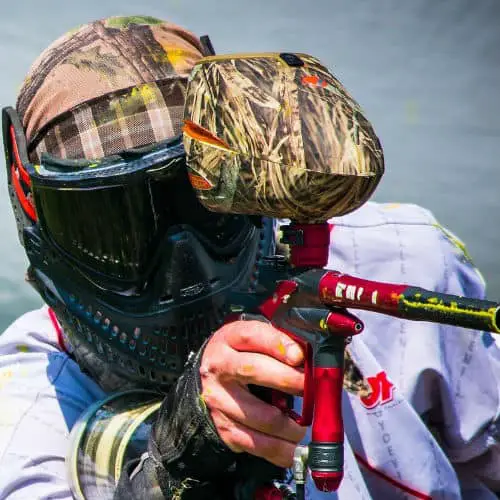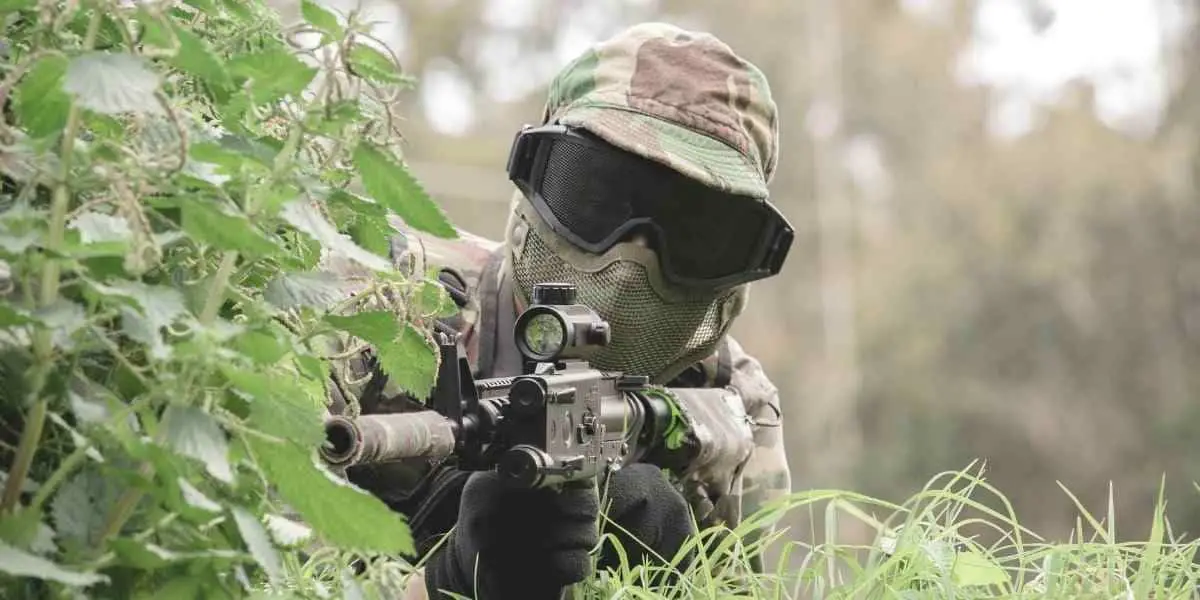
You may have noticed a lot of airsoft guns out on the field running on batteries. There are people using spring-powered guns, such as bolt-action sniper rifles and pump shotguns.
However, you may have also noticed some people use gas-powered. No lines are connecting the gun to an HPA tank, such as Polarstar engines or Wolverine engines. These weapons are powered by "green gas."
Now you may be wondering, "what is green gas?" We will go over what exactly it is and how it works?
Green gas is petroleum gas propane, but it includes silicone oil to clean and lubricate gas-operated airsoft guns.
Weapons using green gas include, but are not limited to, blowback pistols, non-blowback pistols, SMGs, rifles, sniper rifles, light support weapons, shotguns, and grenades.
Now that we know what green gas is and its many uses, let's go into how it works and the different types.
Since green gas is propane, let's first go into how propane works. When you buy green gas, you are buying it in cans, just like propane. Liquid propane is put into these cans, forcing it to stay under pressure.
When the valve is pressed, like when you start filling your device, that liquid would typically turn into vapor and escape. However, since the user is loading a magazine or weapon, the difference in pressure causes the fluid to flow into the device's gas storage. Now that the gas is stored and ready in the magazine or weapon, we can see how it is used.
When the user fires a gas-operated airsoft gun, they are pressing a valve that permits a small amount of gas to escape. Doing so allows the liquid to vaporize and propels the BB forward out of the barrel. When using a non-blowback style weapon, such as bolt action rifles or pistols, gas is only used to propel the BB forward.
However, there are blowback systems that emulate real firearms by driving the slide or piston back. With these systems, more gas is used to move this extra material and the BB itself. Since it is mixed with silicone oil, this lubricates these moving parts, and it also helps keep o-rings healthy.
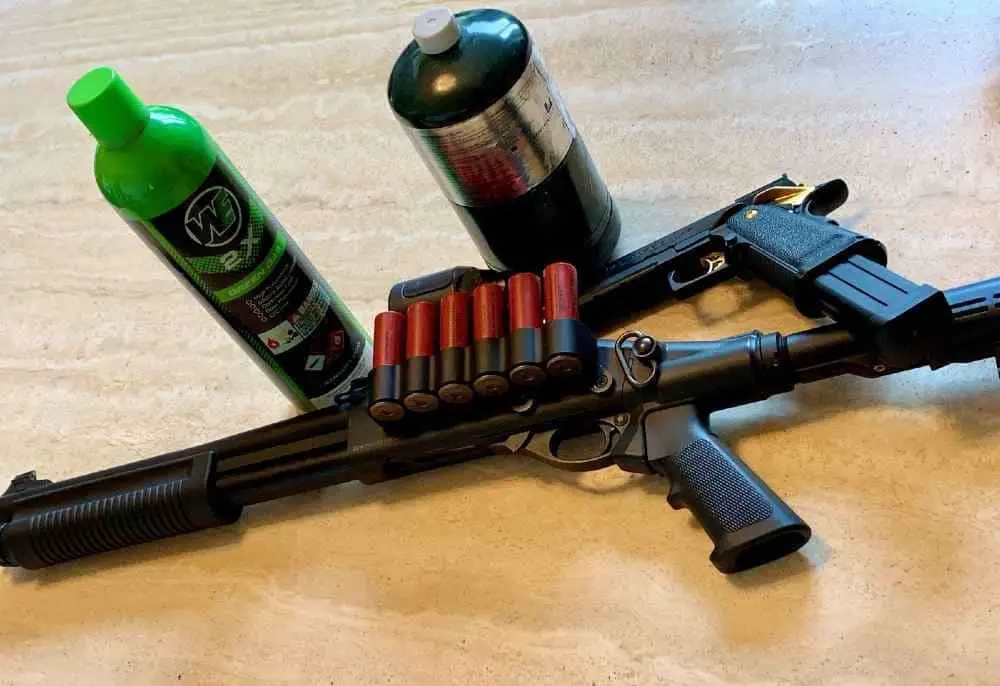
Since green gas is propane, some users opt for propane instead. You can purchase a fill valve that has a reservoir for storing silicone oil. These reservoirs will automatically inject the correct amount of silicone oil when filling your airsoft weapons.
One side effect some users do not expect when using propane instead of green gas is the smell. Propane is mixed with ethyl mercaptan to create a scent that safely warns people of propane leaks. The added silicone oil and the elimination of this odor are why green gas costs more than propane.
Although there are just a few minor differences between green gas and propane, they function the same. Green gas and propane have the same pressure and will both perform the same in any scenario. However, other types of green gas exist that vary in pressure. Red gas is the same as green gas but adds Ethane into the mixture. Red gas offers an approximately 30% higher Bar than green gas.
This increased pressure can be useful if your green gas weapon needs to shoot at a higher velocity. However, the most significant advantage is not just this increased pressure but also the increased pressure at colder temperatures. Since gas is impacted by ambient temperature, green gas gradually becomes weaker as temperatures drop.
Due to this need for higher pressure at lower temperatures, black gas was also created. Like red gas, it mixes Ethane with propane and rests at a higher pressure.
Black gas is a step up from red gas, almost doubling the pressure that green gas uses. When shooting an airsoft gun with black gas and an ambient temperature of 10 degrees Celsius, it will shoot with a similar velocity to green gas at an ambient temperature of 30 degrees Celsius.
Using either red gas or black gas has its uses in colder climates or guns needing higher pressure. It is important to note that not all guns are designed to handle these higher pressures. A pistol designed to shoot under 350 feet per second may suffer damage or even break when higher pressure is used.
If you are unsure if your airsoft gun can handle the higher pressure and are not shooting in cold weather, it is best to stick with green gas.
As we discuss green gas, it would be good to bring up two different sources: HPA and CO2. Although these are not green gas, it is useful to know what they are and why they are different from green gas.
CO2, or carbon dioxide, has a much higher pressure than green gas. CO2 is almost always contained in small metal cartridges, and once they are pierced, they cannot be resealed. Like propane, CO2 does not contain silicone, but unlike propane, you do not add silicone oil to CO2. Airsoft guns that use CO2 are designed for the additional stress the higher pressure poses.
Additionally, the user will need to clean these guns frequently, making sure to oil any rubber o-rings. CO2 is like green gas, as they can vary in pressure output. This variance depends on ambient pressure, how much gas is left, and the general limits of how consistent gas can be.
HPA, or high-pressure air, is an alternative air source. HPA needs to rely on other equipment to be used in airsoft, including a specially built engine, air tank, and regulator. HPA differs from all other options as it is pressurized air and not a liquid that is vaporized.
This fact also gives HPA one of its most famous attributes – consistency. HPA will not deviate in pressure based on ambient temperature, nor will the output change per shot. The output of HPA also does suffer a "cooldown effect" like gasses, meaning firing a gun in full-auto will not eventually lead to a slower cyclic rate.
Like CO2 or propane, HPA does not contain silicone, and airsoft guns will need to be well-oiled by the user. HPA can be "tapped" into green gas guns, which has become a popular choice amongst the airsoft community. It allows for both the enjoyment of gas-operated airsoft guns and the consistency and reliability of HPA.
If you are using green gas, you are going to need to become familiar with maintenance. Although silicone oil is added through the gas in propane (with adapters), green gas, red gas, and black gas, the gun will still need to be cleaned.
You will also need to check on the o-rings used in your airsoft gun since a faulty ring will cause leaks. If unchecked, a damaged o-ring can break and immediately release all the stored gas.
When this happens, you will have to stop playing and replace the o-ring, unless you have a backup. For airsoft weapons that involve moving parts, such as blowback weapons, you will need to clean and re-lubricate these moving parts. Although the silicone oil in the gas will help lubricate the gun, it can quickly become dirty.
Most gas blowback users in the community agree with disassembling your airsoft gun and cleaning it after every use; however, this will vary based on how much you use it. For those using a pistol as an occasional sidearm, you may postpone this to after two or three days of light use. One method to find how often you need to clean relative to how much you use your gun is to go a few days without cleaning.
If you notice a difference in how smooth the weapon operates, reduce the wait by a day. If you do not notice any difference, try increasing the interval by a day.
Now that we have covered the different types of green gas and other air sources, you now know some of their strengths and weaknesses. Be sure to only use the appropriate type of gas for the proper situation.
Using a higher pressure gas means you may shoot too hot for your field's regulated limits. Doing so means you will have to switch gasses or use a different airsoft gun.
Additionally, be sure to use the appropriate pressure to avoid any damage to your weapon. Now that you are ready, go out there and experience the joys of green gas!
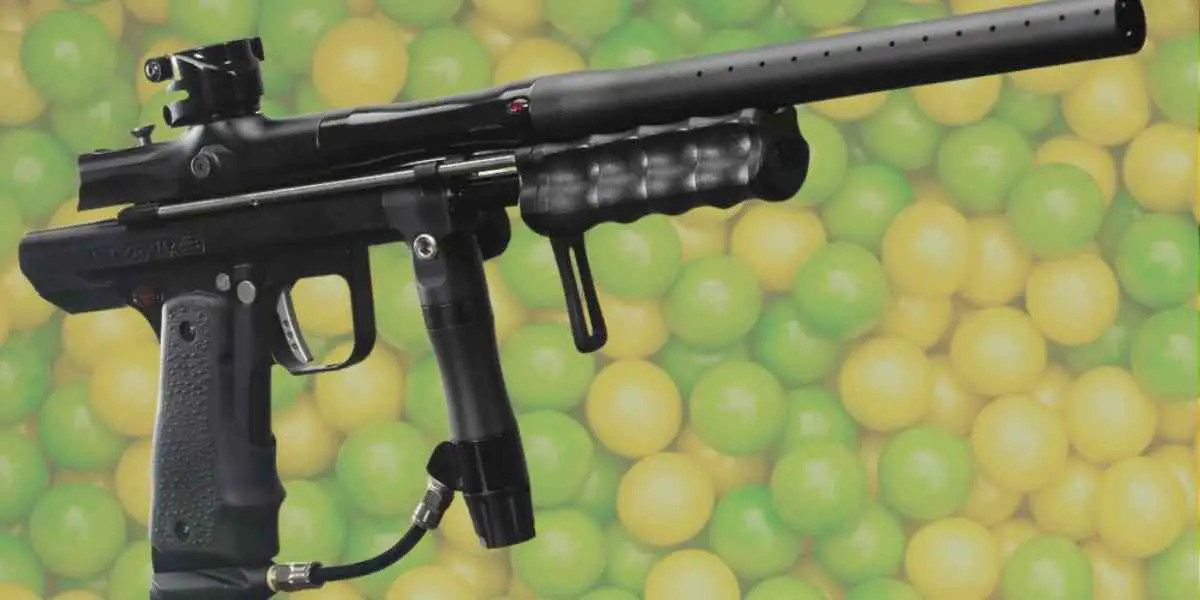 Empire Paintball Sniper Pump Marker Review
Empire Paintball Sniper Pump Marker Review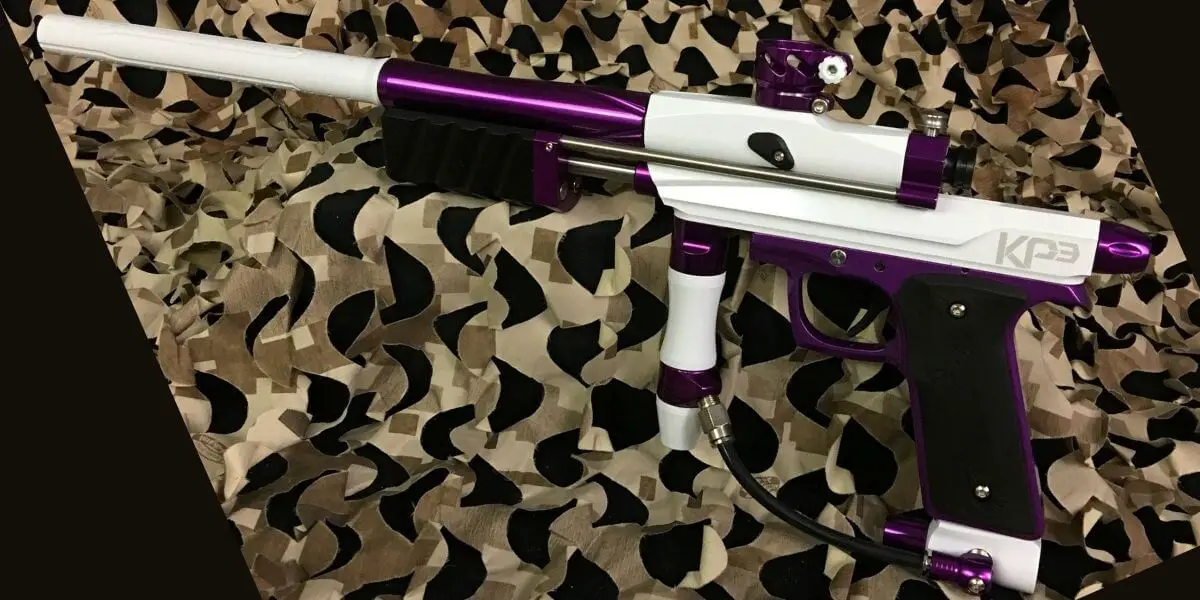 Azodin KP3.5 KAOS Review
Azodin KP3.5 KAOS Review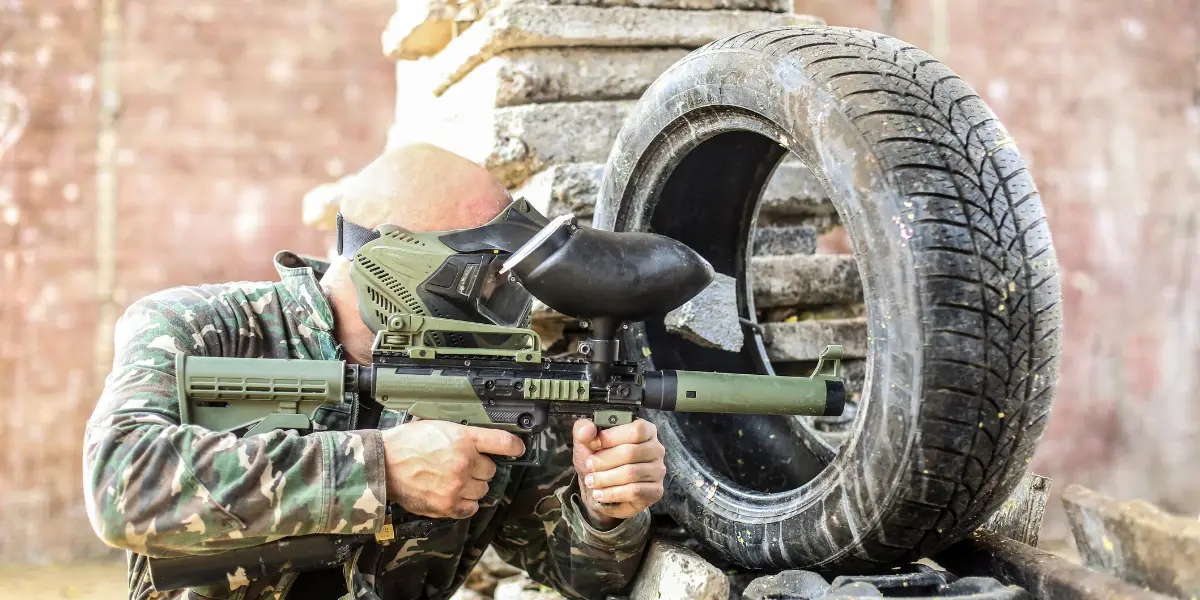 Tippmann Cronus Review
Tippmann Cronus Review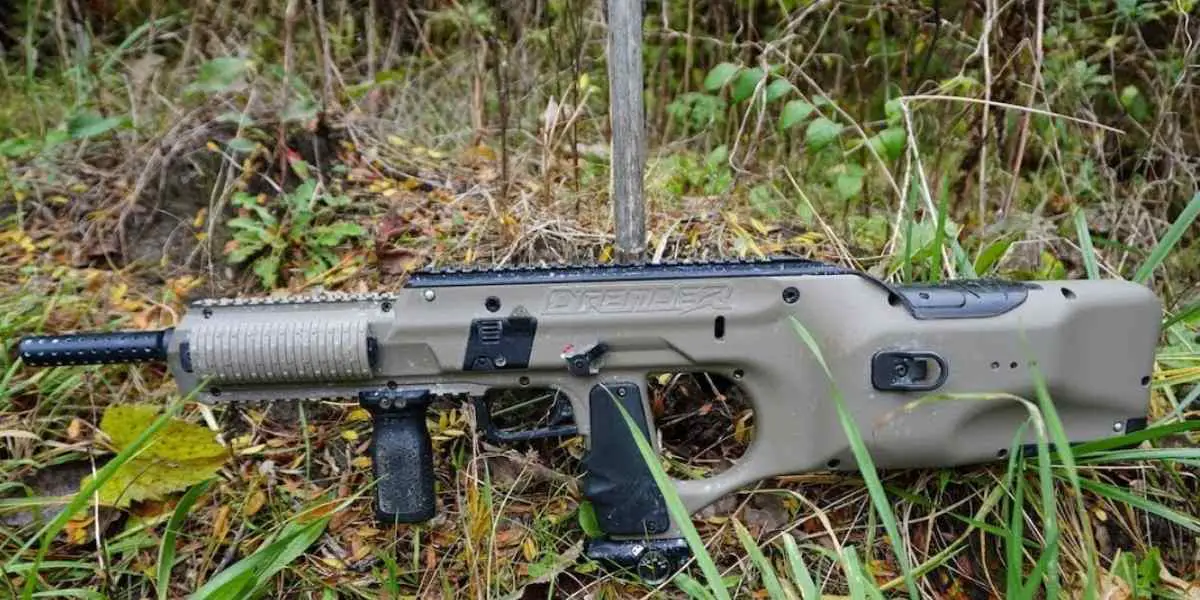 Empire BT DFender Review
Empire BT DFender Review